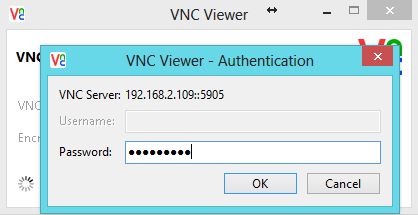

It works well for sharing your desktop screen with another user, whether you want to grant them the ability to control your computer or just be able to see what you are doing on it (with mouse and keyboard input blocked). It allows you to relay your mouse and keyboard inputs as if you were physically sitting in front of the system, when in fact you could be on the other side of the world. Run the command below to ensure that your Ubuntu server has the latest package lists.VNC is a system that allows you to remotely control another computer. First, open your SSH client and log in to the Ubuntu server.Ģ. As such, TightVNC is a good Ubuntu VNC server choice for smooth and stable VNC sessions, even on slow internet connections.įollow the below steps to install TightVNC.ġ.


TightVNC is a popular VNC server known for its low resource requirements and fast performance. You will need to install the Ubuntu VNC server first before you can access your server’s remote desktop. You also need a VNC client such as the VNC Viewer, which this tutorial will use.īy default, Ubuntu does not have a VNC server installed.You must have a non-root user account with sudo privileges.Related: Getting Started using SSH with PowerShell You’ll need an SSH client for logging in to the server remotely.This tutorial will be using the XFCE desktop on Ubuntu. You have installed a Desktop Environment on the server.If you’d like to follow along, be sure you have the following. This tutorial will be a hands-on demonstration. Lucky for you, there’s a way to access your systems remotely by setting up an Ubuntu VNC server. Do you manage Ubuntu servers but aren’t fans of doing everything in the command line? Maybe you’re more comfortable managing servers via remote desktop (and that’s perfectly alright).


 0 kommentar(er)
0 kommentar(er)
